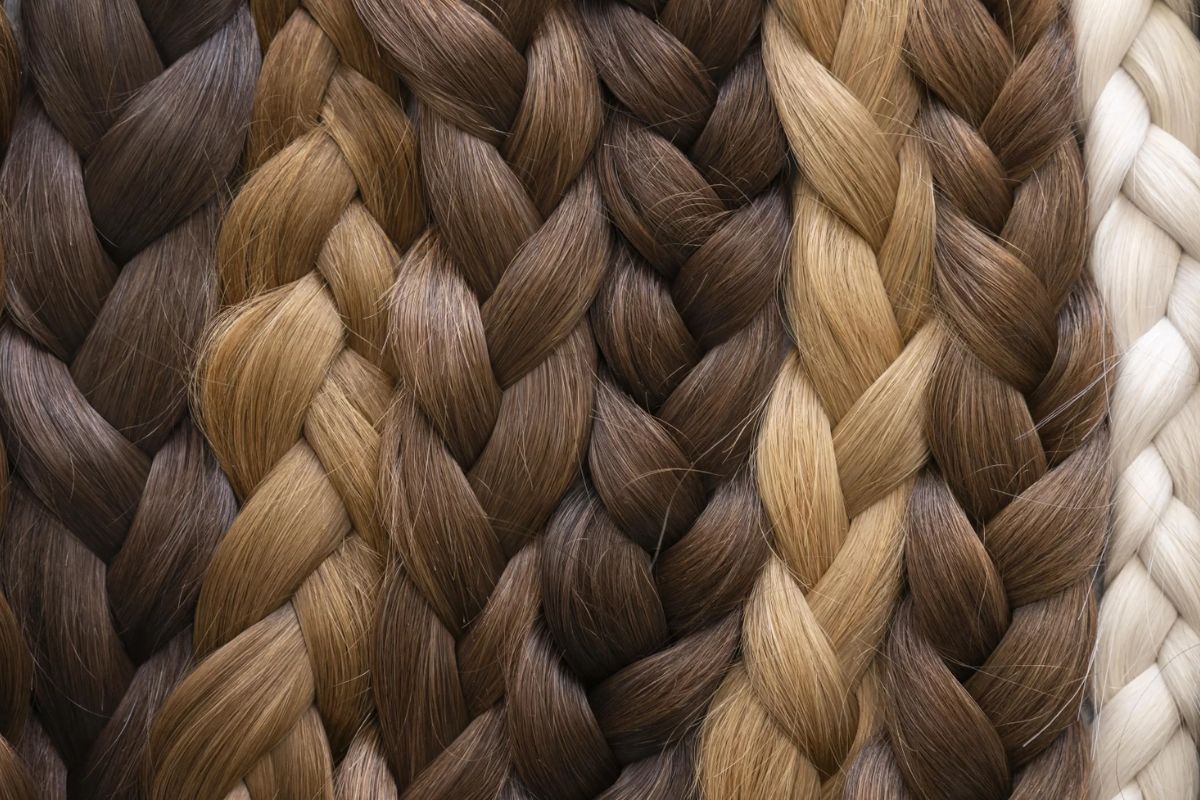Embarking on a hair color transformation is a bold and exciting decision. It goes beyond mere aesthetic change, reflecting personal growth and a new life chapter. For those transitioning from brunette to blonde, the process involves more than just lightening the hair; it’s about understanding and nurturing it in new ways. This guide aims to clarify the process, offering insights into the science and art of hair color change.
Table of Contents
Understanding Hair Structure: The Foundation of Color Change
Hair Anatomy: Beyond the Surface
Hair is a complex structure, composed of multiple layers. The cuticle, the outer layer, shields the inner layers. The cortex, lying beneath the cuticle, contains melanin, the pigment dictating hair color. Grasping this anatomy is vital because dyeing modifies these internal structures.
The Role of Melanin in Hair Color
Melanin appears in two forms: eumelanin (yielding black or brown tones) and pheomelanin (producing red and yellow tones). Brunette hair predominantly contains eumelanin. Transitioning to blonde requires reducing this concentration, thus allowing the new color to emerge.
The Journey from Brunette to Blonde
Decoding the Color Spectrum: Bremod Hair Color Chart
The Bremod hair color chart is a crucial tool, displaying a variety of blonde hues. It aids in visualizing the final outcome and assists in selecting a shade that blends seamlessly with one’s natural undertones.
Selecting the Right Shade: A Guide
Choosing the appropriate blonde shade is essential. It should harmonize with the individual’s skin tone and eye color. For example, ashy or sandy blondes may flatter those with cool skin undertones, whereas golden or honey blondes might suit warm undertones better.
Chemistry Behind Hair Coloring
The Science of Bleaching
Bleaching, a chemical process involving an oxidizing agent like hydrogen peroxide, reacts with melanin in hair, diminishing its concentration and lightening the hair. This step is critical for brunettes, preparing the hair for lighter blonde shades.
Hair Dyes: How They Work
Post-bleaching, hair dyes play a role. These dyes contain molecules that infiltrate the hair shaft. Inside, a chemical reaction enables these molecules to bond with the hair, altering its color. The reaction is precisely adjusted to achieve the desired blonde hue.
Preparing for the Color Change
Hair Assessment: Health and Suitability
A professional hair assessment is essential before coloring. It evaluates the hair’s health, porosity, and existing color. Healthy, virgin hair responds more favorably to coloring, while damaged or heavily treated hair might need additional care or treatment first.
Pre-coloring Care Tips
Preparing your hair for coloring is as crucial as the coloring process. It includes nourishing treatments and avoiding harsh chemicals or heat styling tools. This preparation helps maintain hair health and resilience during the coloring process.
The Coloring Process: Step-by-Step
Application Techniques for Best Results
Application technique greatly affects the outcome. Professional colorists employ methods like balayage or foiling for precise color application, ensuring uniform and natural-looking results. Correct techniques add depth, dimension, and a smooth transition from dark to light.
Timing and Development: The Key Factors
Correct timing is crucial in the coloring process. Leaving bleach or dye on too long can damage hair, while insufficient time might lead to uneven or inadequate color change. Expert colorists gauge perfect timing based on hair type and intended shade.
Aftercare: Maintaining Your New Blonde Look
Post-coloring Hair Care
Post-coloring, hair requires special attention to maintain its health and vibrancy. This involves using sulfate-free shampoos, regular deep conditioning, and limiting heat styling. Products designed for colored hair are key to preserving color and preventing brassiness.
Avoiding Common Pitfalls
Typical post-coloring errors include over-washing, which may remove color, and neglecting UV protection, potentially causing color fade. Awareness of these issues helps prolong the blonde hue.
Myths and Facts About Going Blonde
Common misconceptions about going blonde abound. For instance, the idea that bleaching invariably causes severe hair damage is misleading. Proper technique and aftercare can sustain hair health. Similarly, the notion that certain skin tones can’t suit blonde hair is unfounded. The right blonde shade can enhance any skin tone.
Color Retouching and Maintenance
When to Retouch
Regular retouching is vital to keep a consistent color, particularly as natural hair growth shows. Retouching frequency varies with hair growth rate and the difference between natural and dyed hair.
Long-term Hair Health
Long-term care of blonde hair involves balancing proper maintenance, regular trims, and minimizing harsh treatments. Nourishing masks and oils strengthen hair and enhance shine.
Conclusion
Embracing your new blonde look is an exciting endeavor. It symbolizes a bold choice and a commitment to self-expression. The right approach makes the transition from brunette to blonde a rewarding experience.
FAQs
Can I transition from brunette to blonde without damaging my hair?
Yes, with careful planning and proper care. Using quality products and following a good hair care routine both before and after coloring are key to maintaining hair health.
How do I choose the right blonde shade for my skin tone?
Select a shade that complements your complexion. Ashy or sandy blondes suit cool undertones, while golden or honey shades work better for warm undertones. The Bremod hair color chart can guide you.
How often should I retouch my blonde hair?
Typically, retouching every 4-6 weeks is recommended, but this can vary. Your colorist can suggest a schedule based on your hair growth rate and the contrast between your dyed and natural hair colors.
















